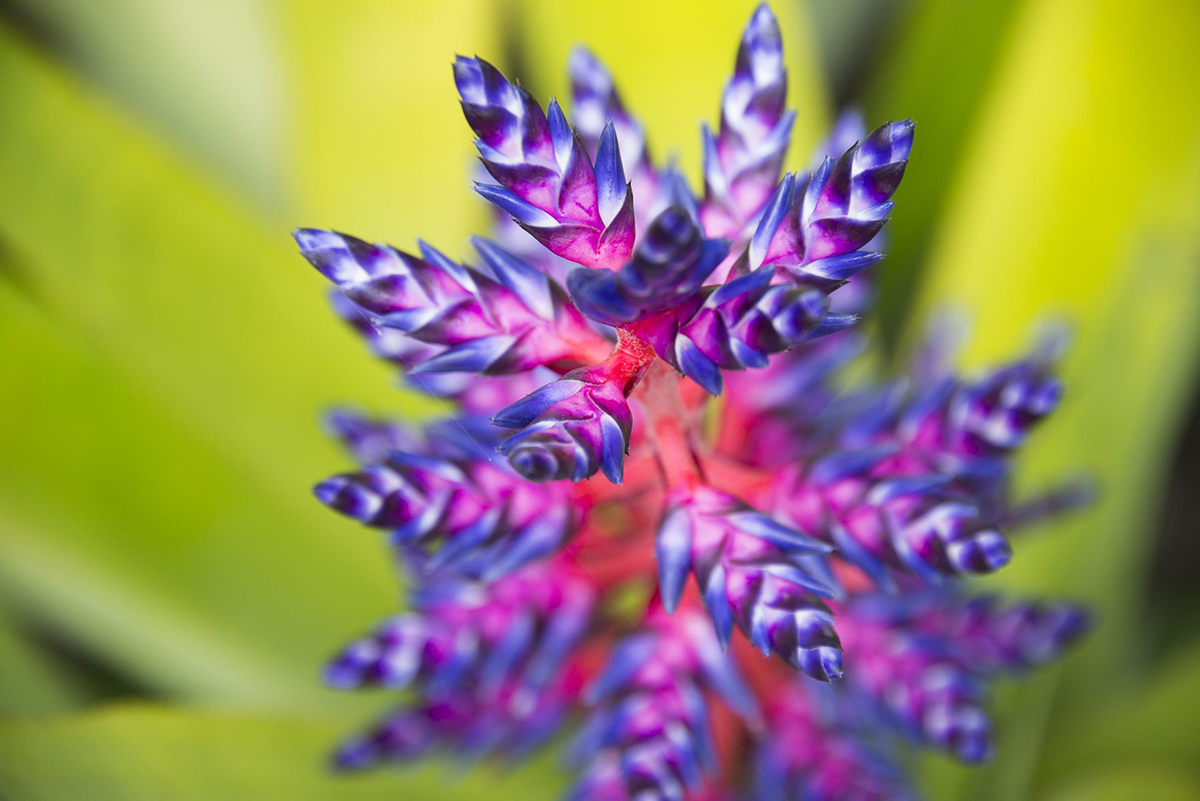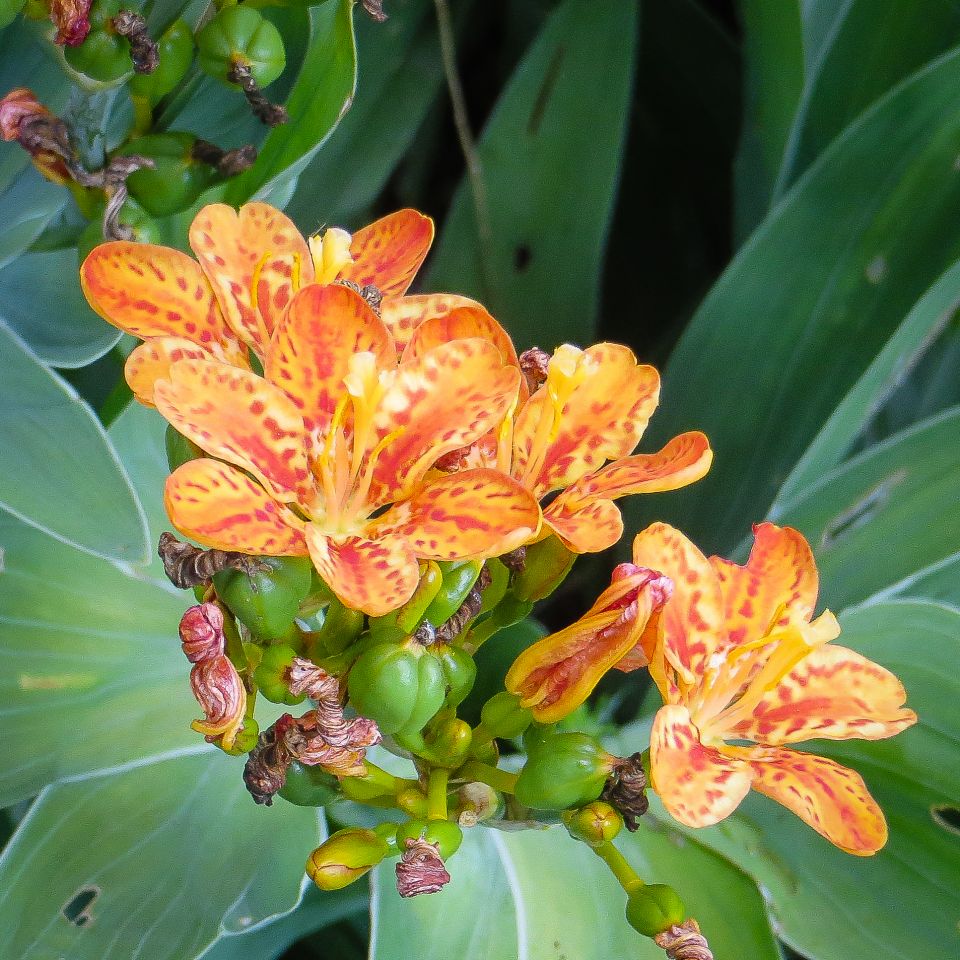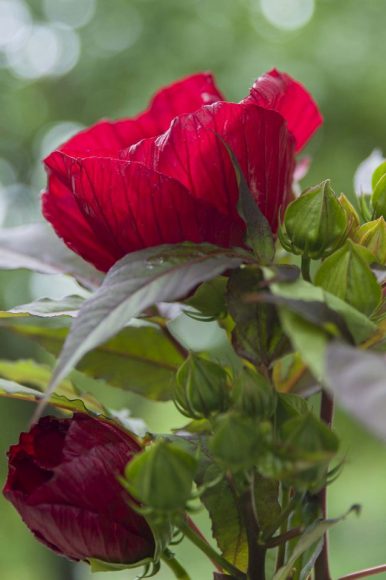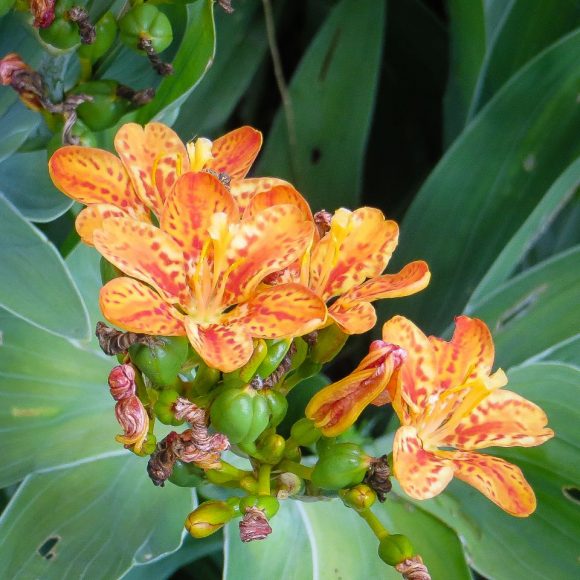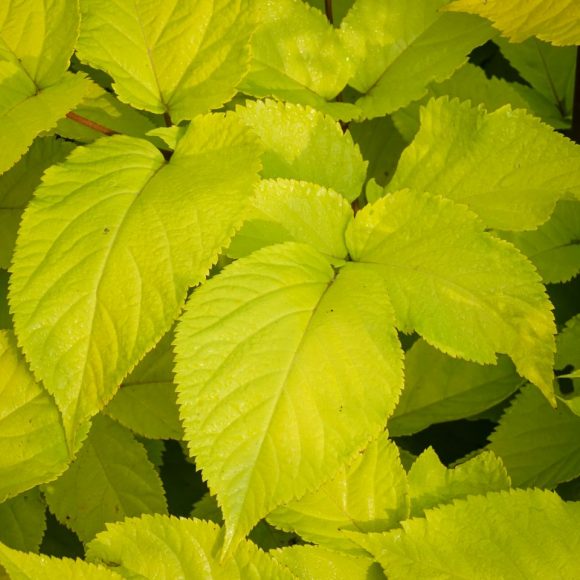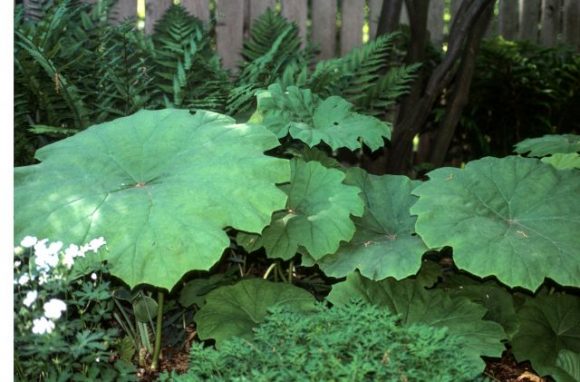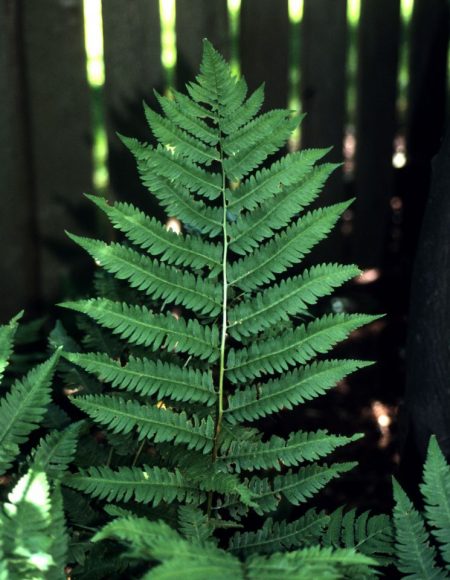Towering palms, bold swaths of color, and tropical plants have transformed the Chicago Botanic Garden into an exotic paradise this year for Brazil in the Garden.
To create the “Brazil effect,” floriculturist Tim Pollak and Andrew Bunting, the Garden’s assistant director and director of plant collections, drew from designs by renowned Brazilian landscape architect Roberto Burle Marx, who was known for his bold, modernist style.
We talked with Pollak and Bunting to learn how you can grow a Brazil-inspired tropical garden.
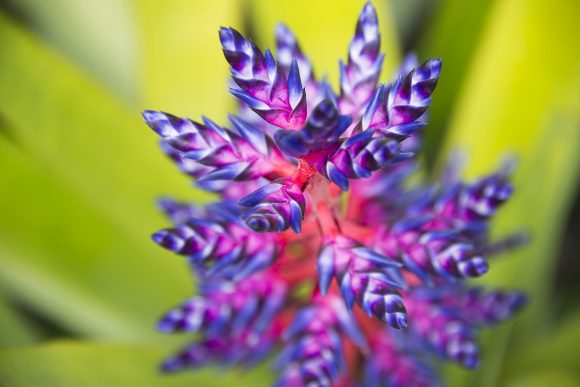
1. Find color in foliage
Burle Marx used bold, bright colors such as purple, orange, and green in his gardens. When planting your garden, Pollak recommended choosing foliage plants with various shades of green. Foliage tones are endless: silvers, blues, bronze, and burgundy. Foliage plants can also bring out the colors of flowers, and vice versa. For instance, if your garden’s foliage is silver, blue, and purple, pops of white flowers will enhance the foliage colors. “Remember,” Pollak said, “there are no rules when it comes to color.” Complementary or monochromatic schemes are subject to taste. But gardens can still be attractive without flowers. Instead, think of flowers as icing on the cake.
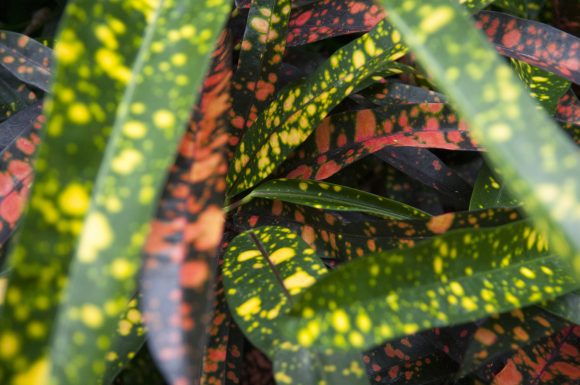
2. Use contrasting textures and shapes
Burle Marx was known for using large swaths of contrasting textures and forms in his landscape designs. Get the Burle Marx effect by choosing plants with various surfaces and shapes. For instance, Pollak said to think about the foliage of your plant—is it shiny or muted? Waxy or fuzzy? Is the venation (patterns of veins on the leaf) netted or in parallel lines? Are the shapes of the leaves long and thin, or short and wide? When shopping at your local garden center or nursery, follow Pollak’s trick: Lay your plants next to each other on your cart or on the floor. You’ll see which plants have different styles, which create a lush, biodiverse mood in your garden.
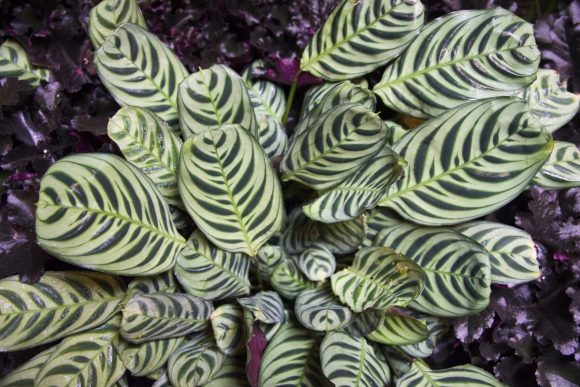
3. Think: thrillers, fillers, and spillers
Pollak and Bunting often advise gardeners to think “thrillers, fillers, and spillers” when planning their garden design. By using a combination of these kinds of plants, you can easily create a varied garden design. Here’s a breakdown of the three types:
- Thrillers: Tall plants are your “wow factors.” They’re dramatic, and stand out in your garden. Think of these plants as conversation starters. Pollak and Bunting recommend palms (Arecaceae), elephant ears (Colocasia), and cannas (Canna generalis) for Brazil-themed “thrillers.”
- Fillers: Medium-sized plants fill space in your garden. They can be interesting foliage plants or flowers, or flowers with interesting foliage. Pollak and Bunting recommend Persian shield (Strobilanthes dyerianus) and firecracker plants (Cuphea ignea) for Brazil-themed “fillers.”
- Spillers: Low plants spill out of a container, or trail along the foot of your garden bed. Pollak and Bunting recommend sweet potato plants (Ipomoea batata) and purple spiderwort (Tradescantia pallida) for Brazil-themed “spillers.”
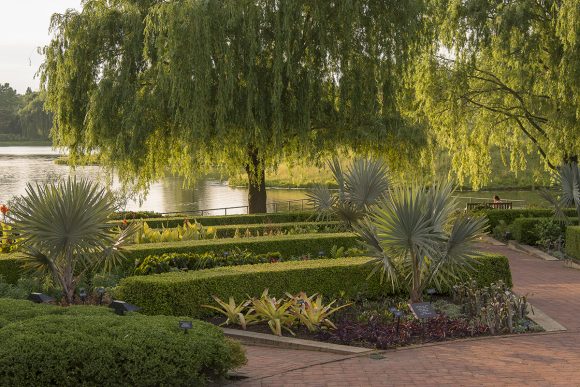
4. Create repetition for effect
When arriving at the Garden’s Visitor Center, you might imagine you’ve landed in Miami. Rows of swaying coconut palms, towers of bromeliads, and beds of elephant ears greet visitors as they walk through the Garden. The tropical illusion is deliberate: We repeated similar plants in our beds to broaden the Garden’s designs, making small spaces look larger. In your own garden, you can use swaths of similar plants in rows or curving shapes. The result may transport you to the tropics.
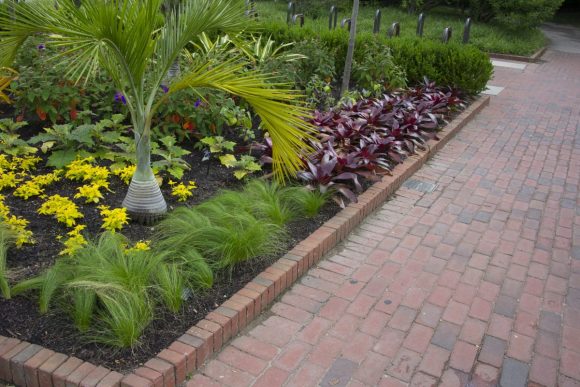
5. Add a touch of tropics
Planting a tropical-themed garden doesn’t require you to use 100 percent tropical plants, said Bunting, but a few plants can have an impact. To create a Brazil-themed garden, do as Burle Marx did: Find plants within your reach. That is, at your local garden center or nursery, find palms or other tropical plants that can be brought inside for the winter. To care for tropical plants, keep in mind they thrive in heat and humidity, and need plenty of moisture. Use supplementary fertilizer to keep them healthy and thriving. And remember, if you want the tropical effect without tropical plants, there are plenty of ways to think creatively by using bold houseplants, annuals, and perennials.
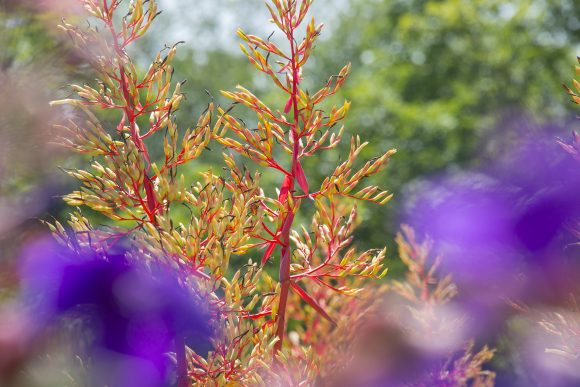
Learn more about the flora and fauna of Brazil in our upcoming conservation talks, held on the following Thursdays from 2 to 3 p.m. in the Linnaeus Room, Regenstein Center.
| AUG 10 |
Birds of Brazil Doug Stotz, senior conservation ecologist, The Field Museum |
| AUG 17 |
A Butterfly Adventure in the Amazon Basin Doug Taron, chief curator of the Chicago Academy of Sciences, Peggy Notebaert Nature Museum |
| SEP 28 |
Plant Diversity and Conservation in Brazil Pat Herendeen, senior director, Systematics and Evolutionary Biology, Chicago Botanic Garden |
| OCT 12 |
Mycological Adventures in Brazil Greg Mueller, chief scientist and Negaunee Foundation Vice President of Science, Chicago Botanic Garden |
Photos by Tia Mitchell Photography
©2017 Chicago Botanic Garden and my.chicagobotanic.org

